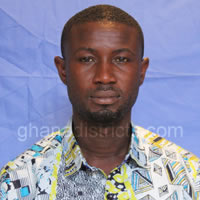The focus of this theme looks at the effectiveness of institutional structures in place for participatory and administrative decision making. Various Non Governmental Organisations have been identified and the level of Co-ordinating among Community Based Organisations examined.
INSTITUTIONAL FRAME WORK FOR DECISION MAKING
Ghana’s institutional structure for promoting local level planning and decision making was until recently based on the Local Government Law 1988, PNDC Law 207. this law, made significant provisions for effective-attainment of the goals of decentralization.
On the 7’ of January 1993, Ghana attained constitutional status and therefore the PNDC Law 207 was revised to reflect constitutional demands in the form of the Local Government Act 1993 which was passed in December, 1993. Major provision contained in the Fourth Republican Constitution of Ghana, the Civil Service Law, 1993 (PNDC Law 327).
The National Development Planning (system) Bill as well as the Local Government Act 1993 point to the fact that deliberates attempts have been made to reduce the powers of the Regional Co-ordinating Council (RCC’s) and place more power at the Assembly level as a means for attaining full decentralization.
THE ADMINISTRATIVE MACHINERY
By Law, Nkoranza South Assembly constitutes the highest political and administrative authority in the municipaity. The Assembly consists of 62 members, 42 of whom are elected from the 42 electoral areas ii) the ^district, 18 .or 1/3 of the membership being government, appointees, the Chief Executive and the Honourable Member of Parliament do not+iave voting rights The Assembly is presided over by a Presiding Member who is elected from among the members of the Assembly by at least a two -thirds majority. The Assembly is responsible for the overall development . It is charged with the task of programme formulation, budget preparation and the promotion of development activities within the District.
The executive and administrative functions of the Assembly are performed by an Executive Committee, elected from among the Assembly members but not exceeding one-third of the strength of the Assembly. The Executive Committee is chaired by the Chief Executive who is the chief representative of the Central Government in the Assembly. This committee, excludes the Presiding Member of the Assembly. The Executive Committee operates ’’through "the following sub-committees formed out of the Assembly.
- Development Planning Sub-Committee
- Works Sub-Committee
- Justice and Security Sub-Committee
- Finance and Administration Sub-Committee
- Social Services Sub-Committee
Apart from these Mandatory Sub-Committee, the Assembly in its own wisdom form four other Sub-Committees to fully cater for some sectors which the Assembly considered as very necessary. They are as follows:
- Environmental Protection and Sub-Committee
- Education Sub-Committee
- Agriculture Sub-Committee
- Women and Children Sub-Committee
The sub-committees are saddled with the responsibility of deliberating on specific issues and submitting their recommendations to the Executive Committee which in turn presents them to the Assembly for ratification. There is a Development Planning and Budgeting Unit (now called Municipal Planning Co-ordinating Unit) established to provide a secretariat and advisory services to the Executive Committee in its planning, programming and budgeting functions. This Unit however is woefully understaffed.
Planning function are seriously impaired because the only Development Planning Officer and the Budget Analyst at post cannot cope with the immense task. There are eleven Area Councils/Town Council/Urban Council and 135 Unit Committees within the Municipality. These constitute sub-district administrative units and are instrumental in local development matters, The Administration, is headed by a civil servant the Municipal Co-ordinatig Director. The Administrative Machinery with modifications according to the Local Government Law 1993.
DECENTRALISED DEPARTMENTS
The PNDC Law 207 provided for the establishment of 22 decentralized Departments . Out of the 22 departments, the following were present in the District:
- The Ghana Education Service
- Department of Parks and Gardens
- Department of Social Welfare
- Department of Community Development
- Department of Town and Country Planning
- Department of Births and Deaths
- Controller and Accountant Generals Department
- Office of the Medical Officer of Health
- Fire Service
- Municipal Agriculture Development Unit (MOFA)
- Ghana Library Board
- Office of the National Youth Organizing Commission.
- Forestry Department (Sub-distant.
It is to be noted that most of these departments are operating under severe constraints. Office and residential accommodation are lacking, forcing most workers to commute long distances to work. Besides, most of the departments lack qualified staff and are ill-equipped with the basic office facilities. These problems greatly affect their performance. In addition to these departments, other non decentralized institutions also exist in the Municipality. These are:
- Ghana Food Distribution Corporation.
- Ghana Commercial Bank
- Lands Commission Secretariat
- Centre for National Culture
- Agric Development Bank
- British American Tobacco Limited.
- Ghana Telecommunications
- Ghana Postal Services
- Electoral Commission
- National Commission for Civic Education.
- Commission on Human Rights and Administrative Justice
Non-governmental Organizations like Adventist Relief Agency (ADRA), World Vision International, UNDP and Action Aid Ghana also operate in the District.
THE LOCAL GOVERNMENT ACT, 1993 (ACT 462)
One of the significant changes made in the new Local Government Act 1993, (Act 462) is the abolition of the twenty two decentralized departments established under the Law 207 and their replacement by eleven major ones. These departments are to be created as departments of the Assembly owing full allegiance to the Assembly.
The old departments, therefore, are to cease to exist in the district and their staff, transferred to a local government service at a precise date to be determined by legislative instrument. The budget of the Nkoranza District Assembly shall consequently consist of the aggregate revenue and expenditure of all departments and organization under the District Assembly. The new Departments established are:
- Central Administration Department
- Finance Department
- Education, Youth and Sports Department
- District Health Department
- Agriculture Department
- Physical Planning Department
- Social Welfare and Community Development Department
- Natural Resources Conservation Department: Forestry, Game and Wildlife Division.
- Works Department
- Industry and Trade Department
- Disaster Prevention Department.
The Municipal Development Planning and Budgeting Unit (MDPBU) has been renamed Municipal Planning Co-ordinating Unit (MPCU) and the Budgeting function of the Unit has been relocated in the Finance Department. Co-ordination between the Assembly and other bodies like public corporations, statutory bodies and non-governmental organizations have been stressed in the new Act.
Development
The new institutional arrangements as discussed above show a greater amount of responsibility on the Assembly than ever before. The overall effect of the new Act is to weaken the vertical linkages of the Assembly level institutions with their parent ministries and to strengthen the horizontal relationships with each other and the Assembly. It is expected that the Assembly will progress towards a greater integration of its development plans and programmes. However, the creation of the new departments will cause major shifts in the institutional set up of the Assembly.
New organizational structures will have to be established, old staff may need reshuffling and re-orientation and working procedures may need to be revised. With the launching of the District Assemblies Common Fund, the Assembly’s project financing capability has improved. In view of all these, the Assembly’s need for permanent qualified staff is more urgent than ever before, Besides, there is the need to offer regular training for old staff.
Human Resource Development
Human resource, social infrastructure and basic services serve as a vehicle and tool to propel the development of every nation. The Growth and Poverty Reduction Strategy (GPRS II), a strategic framework for Ghana, has as an important component of Human Resource Development. This theme is to ensure that the right to basic social services such as education, health care, safe drinking water and sanitation and decent housing that improve the well being of all Ghanaians.
The NEPAD and MDG also seek to promote gender equality and empowering women. This was to eliminate gender disparities in the enrolment in primary and secondary education. This section analyses the provision of social infrastructure and services such as education, health, water and sanitation, housing, skills development and energy.
Date Created : 11/17/2017 2:29:51 AM





 facebook
facebook X (twitter)
X (twitter) Youtube
Youtube +233 593 831 280
+233 593 831 280 0800 430 430
0800 430 430 GPS: GE-231-4383
GPS: GE-231-4383 info@ghanadistricts.com
info@ghanadistricts.com Box GP1044, Accra, Ghana
Box GP1044, Accra, Ghana